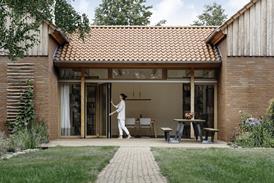Furniture for people who have incontinence is really horrible institutional-looking stuff or needs to be replaced every six months. That's expensive – about £1500 for a sofa and chairs.
People with learning disabilities want a comfortable home with nice furniture like anybody else, but I couldn't find anything at furniture companies. So I got in touch with the Helen Hamlyn Research Centre in 2002. It's part of the Royal College of Art and specialises in inclusive design, which doesn't look like it's for someone with a problem.
We got a grant of £10,000 from the Calouste Gulbenkian Foundation in December 2003 to do the first stage of design.
We are now working with Factory Design and Kirton, who are putting fabric together so it doesn't use stitching and urine doesn't soak through.
They're also thinking about the structure of sofas and armchairs – if someone rocks a lot, should the chair rock with them? In ordinary furniture there are some breakage problems when people bounce or drop themselves really heavily into chairs.
I'm about to see the first designs and am very excited. But we need an extra £45,000 to take them to prototype. They could also be useful with elderly people. Perhaps health organisations would be interested? It's all about taking labels and stigma away.
Source
Housing Today
Postscript
Ann Wimbledon, director of business development at housing association Yarrow, spoke to Chloe Stothart

















No comments yet